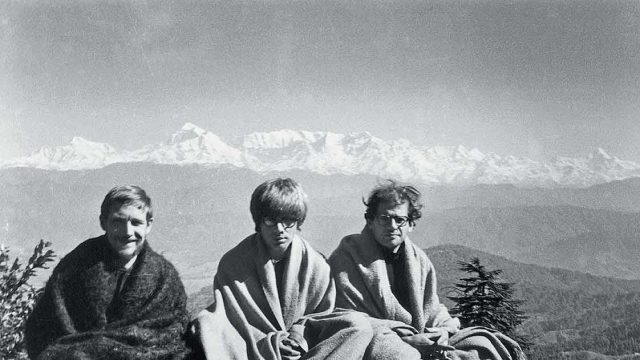Much before travelling to India for matters ‘spiritual’ became a fad, two of America’s greatest poets made the journey to India. Gary Snyder, the Pulitzer-winning poet of the American wilderness, had just completed a long period of study at a Zen temple in Japan. Allen Ginsberg was dealing with the fame and notoriety that his poem Howl had received and the sudden public interest in The Beats. Both were, in their own ways, searching for some sense of permanence in an impermanent world. Ginsberg gave up on San Francisco and with his partner, the poet Peter Orlovsky, travelled to Morocco, Paris, Tangier, Greece, Tel Aviv and Mombasa before taking a ship to Bombay, and a train to Delhi. Snyder and his poet wife Joanne travelled from Kyoto to Delhi via Sri Lanka, Madras, Pondicherry and Benaras. The two sets of travellers met in Delhi and proceeded to Rishikesh to study yoga, and finally took a bus to Kausani as Snyder wanted to see Nanda Devi.
Deborah Baker, in her superb book, A Blue Hand: The Beats in India, sets the scene: “The Public Works Department bungalow they’d reserved faced out across another endlessly beautiful valley, the surrounding hillsides covered with blooming rhododendron and deodar pine. When the clouds broke up toward evening, a solid wall of white appeared abruptly before them, revealing the Himalayan horizon within fifty miles of their veranda. This was the Trisul — Nanda Devi — Nanda Kot ridge, stretching from Nepal and Tibet in the east to the Punjab in the west. At dawn, wrapped in shawls and furry Tibetan blankets, Allen, Peter and Gary rose in darkness to watch the colour of the mountains turn from a cold white blue to a furnace-like glow of red.
“Jai Ram!” Gary exclaimed, as the gods at last appeared to him.”




